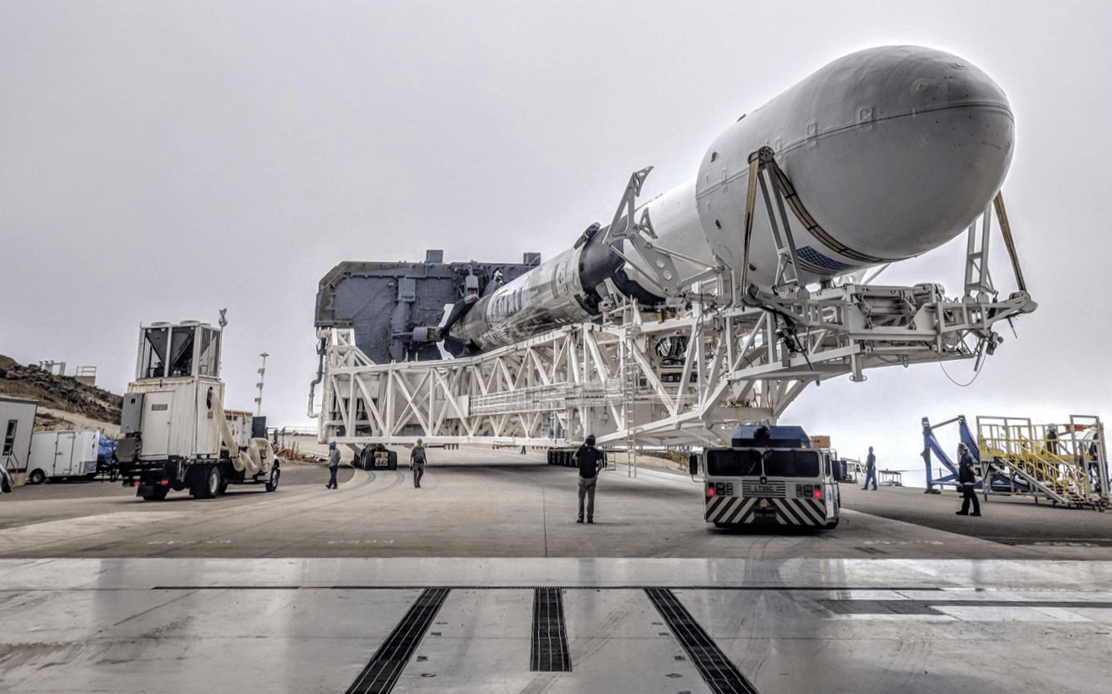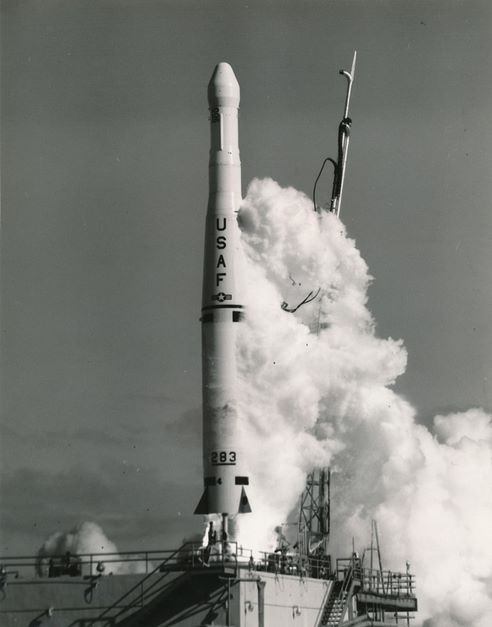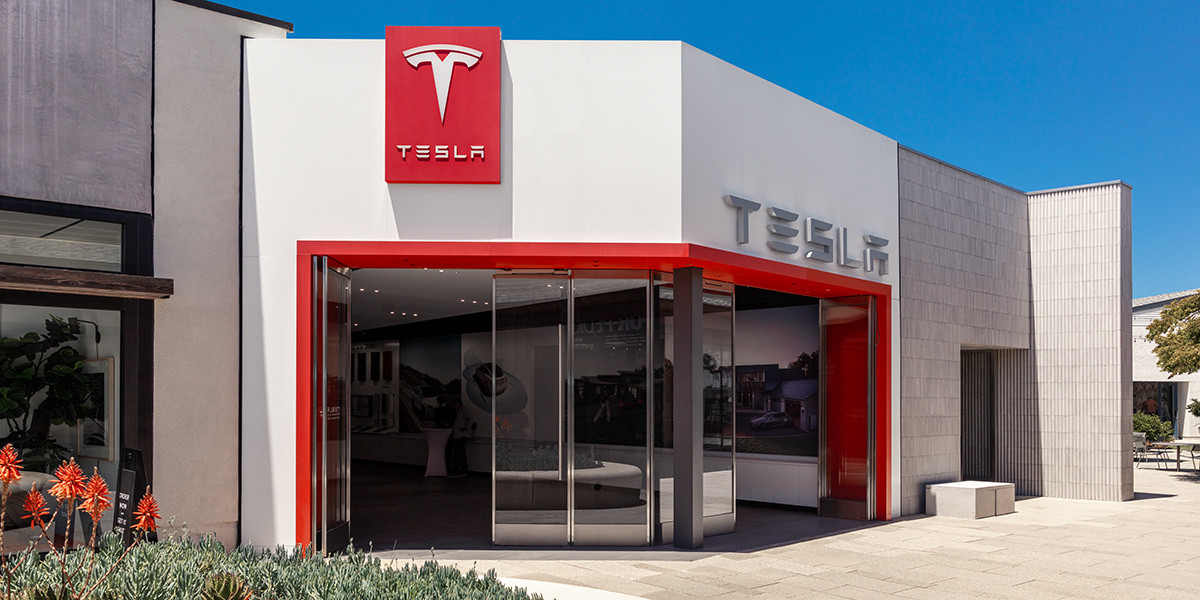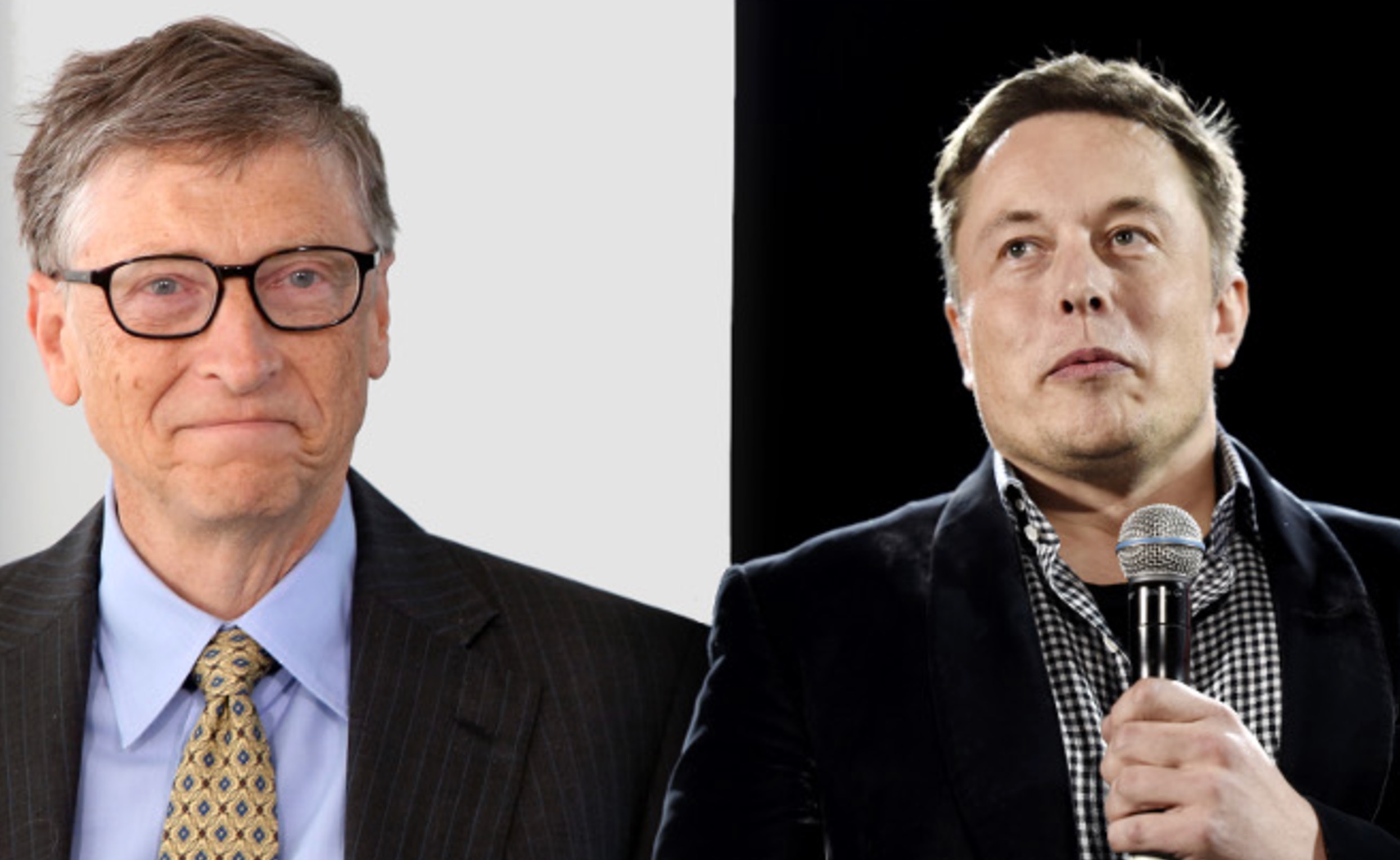

News
SpaceX to shift Falcon 9’s next West Coast launch to Florida, the first of its kind in decades
According to NASASpaceflight spaceflight reporter Michael Baylor and an Argentinian government website, SpaceX appears to have decided to move its next West Coast launch from California to Florida, signifying the first East Coast polar launch in half a century could be just four months away.
Initially expected to launch out of SpaceX’s Vandenberg Air Force Base (VAFB) SLC-4E pad on a Falcon 9 rocket, the Argentinian space agency’s (CONAE) SAOCOM-1B Earth observation satellite was scheduled to lift off no earlier than February 2020. That launch window remains the same but Florida’s Cape Canaveral Air Force Station (CCAFS) has somehow arranged approval to reopen the United States’ Eastern polar launch corridor. The story behind the corridor’s closure is a bizarre one.
Having earned itself a bit of notoriety and fame over the years, the story of the closure of the Eastern polar launch corridor is simple on the outset. In November 1960, a Thor Able-Star rocket lifted off from Cape Canaveral for what was hoped to be a routine military launch. This particular mission carried GRAB II, a covert signals intelligence spacecraft designed to spy on radio communications around the globe.
Long story short: that Thor rocket suffered a failure that caused the booster to prematurely shut down and divert from its planned trajectory, forcing the range safety officer to manually trigger the rocket’s self-destruct mechanisms. Broken apart by explosives, one unlucky cow – standing in a Cuban field some 400 miles (650 km) downrange – was struck by rocket debris, killing the farm animal. Indeed, this might initially seem like an absurd reason to entirely end the practice of polar orbital launches from Cape Canaveral, but Cold War tensions were extremely high and President Fidel Castro leaped on the opportunity to hound the US.

An article published in a 2008 issue of the US Naval History Magazine covers this minor debacle in greater detail, shedding some much-needed light on why things played out how they did.
“In what somewhat inaccurately became known as “the herd shot around the world,” some of the falling rocket debris apparently splattered on a Cuban farm and killed a cow. “This is a Yankee provocation,” accused Revolucion, an official Cuban publication, insisting that the rocket was deliberately exploded over the country. Government radio stations cited the incident as further proof that the United States was trying to destroy the regime of Cuban President Fidel Castro. One cow was even paraded in front of the U.S. Embassy in Havana wearing a placard reading “Eisenhower, you murdered one of my sisters.”
Castro filed a complaint at the United Nations, and Washington sheepishly conceded the possibility that “fragments from the rocket booster” could have landed in Cuba. CIA Director George Tenet later quipped somewhat tastelessly that it was “the first, and last, time that a satellite had been used in the production of ground beef.” Further launches overflying Cuba were postponed, and improvements were made to the Cape Canaveral range-safety system. In any case, it was a dejected NRL group that returned to Washington.”
Naval History Magazine – April 2008
That overflight postponement was never withdrawn and VAFB – located on the coast of California – has supported all US polar launch** activity since late-1960. Public word of the possible reopening of the Eastern polar launch corridor came 57 years later when Wayne Monteith, commander of the 45th Space Wing, revealed that he had tasked analysts to determine whether the corridor could be reopened in light of wildfire troubles that closed VAFB’s Western Range in 2016. They concluded that there were no obvious technical showstoppers.
**There is a report that a Thor Delta C rocket performed two sun synchronous orbit (SSO; ‘nearly polar’) launches in the mid-1960s, overflying Cuba in the process, but it’s unclear if the trajectory used was the same as those used before Thor’s 1960 GRAB II failure.
A reporter who was present at the press conference said that SpaceX’s SAOCOM 1B launch hadn’t officially been put on on the Eastern Range’s planning schedule, indicating that some work remains before it can truly be said that the Eastern polar launch corridor has been reopened. Nevertheless, Douglas Schiess, the current commander of the 45th Space Wing, was obviously confident that those final steps are more technicalities than potential showstoppers and that 21st-century Eastern polar launches are now a question of “when”, not “if”.
In Monteith’s 2017 statement, it was stated that there is one major condition on the reopening: all launch vehicles intending to fly it must feature autonomous flight termination systems (AFTS). This is due to the risk that the rocket’s plume might prevent the reliable reception of radio telemetry at Florida-based tracking stations. SpaceX is currently the only launch provider in the world to have implemented AFTS and is thus the only provider currently capable of launching polar missions from Florida.

Time will tell just how extensive Florida’s polar launch capabilities are and how dramatically the new capability will impact Vandenberg’s commercial launch ecosystem. Speaking in 2017, Monteith was fairly blunt in his assessment that California was not only tepid on the subject of expanding VAFB’s commercial launch manifest, but was actively hostile at points. His point: if Vandenberg isn’t going to put effort into stimulating a commercial polar launch ecosystem, Cape Canaveral might as well try.
VAFB is currently in the throes of a four-month launch lull previously expected to last until SpaceX’s Feb. 2020 SAOCOM 1B launch. Depending on how things play out for startup Firefly Aerospace and how readily CCAFS can take to its new polar launch role, Vandenberg’s lull could easily stretch into the second half of 2020, perhaps more than a year between launches.
Check out Teslarati’s Marketplace! We offer Tesla accessories, including for the Tesla Cybertruck and Tesla Model 3.

News
Tesla dispels reports of ‘sales suspension’ in California
“This was a “consumer protection” order about the use of the term “Autopilot” in a case where not one single customer came forward to say there’s a problem.
Sales in California will continue uninterrupted.”

Tesla has dispelled reports that it is facing a thirty-day sales suspension in California after the state’s Department of Motor Vehicles (DMV) issued a penalty to the company after a judge ruled it “misled consumers about its driver-assistance technology.”
On Tuesday, Bloomberg reported that the California DMV was planning to adopt the penalty but decided to put it on ice for ninety days, giving Tesla an opportunity to “come into compliance.”
Tesla enters interesting situation with Full Self-Driving in California
Tesla responded to the report on Tuesday evening, after it came out, stating that this was a “consumer protection” order that was brought up over its use of the term “Autopilot.”
The company said “not one single customer came forward to say there’s a problem,” yet a judge and the DMV determined it was, so they want to apply the penalty if Tesla doesn’t oblige.
However, Tesla said that its sales operations in California “will continue uninterrupted.”
It confirmed this in an X post on Tuesday night:
This was a “consumer protection” order about the use of the term “Autopilot” in a case where not one single customer came forward to say there’s a problem.
Sales in California will continue uninterrupted.
— Tesla North America (@tesla_na) December 17, 2025
The report and the decision by the DMV and Judge involved sparked outrage from the Tesla community, who stated that it should do its best to get out of California.
One X post said California “didn’t deserve” what Tesla had done for it in terms of employment, engineering, and innovation.
Tesla has used Autopilot and Full Self-Driving for years, but it did add the term “(Supervised)” to the end of the FSD suite earlier this year, potentially aiming to protect itself from instances like this one.
This is the first primary dispute over the terminology of Full Self-Driving, but it has undergone some scrutiny at the federal level, as some government officials have claimed the suite has “deceptive” naming. Previous Transportation Secretary Pete Buttigieg was vocally critical of the use of the name “Full Self-Driving,” as well as “Autopilot.”
News
New EV tax credit rule could impact many EV buyers
We confirmed with a Tesla Sales Advisor that any current orders that have the $7,500 tax credit applied to them must be completed by December 31, meaning delivery must take place by that date. However, it is unclear at this point whether someone could still claim the credit when filing their tax returns for 2025 as long as the order reflects an order date before September 30.

Tesla owners could be impacted by a new EV tax credit rule, which seems to be a new hoop to jump through for those who benefited from the “extension,” which allowed orderers to take delivery after the loss of the $7,500 discount.
After the Trump Administration initiated the phase-out of the $7,500 EV tax credit, many were happy to see the rules had been changed slightly, as deliveries could occur after the September 30 cutoff as long as orders were placed before the end of that month.
However, there appears to be a new threshold that EV buyers will have to go through, and it will impact their ability to get the credit, at least at the Point of Sale, for now.
Delivery must be completed by the end of the year, and buyers must take possession of the car by December 31, 2025, or they will lose the tax credit. The U.S. government will be closing the tax credit portal, which allows people to claim the credit at the Point of Sale.
🚨UPDATE: $7,500 Tax Credit Portal “Closes By End of Year”.
This is bad news for pending Tesla buyers (MYP) looking to lock in the $7,500 Tax Credit.
“it looks like the portal closes by end of the year so there be no way for us to guarantee the funds however, we will try our… pic.twitter.com/LnWiaXL30k
— DennisCW | wen my L (@DennisCW_) December 15, 2025
We confirmed with a Tesla Sales Advisor that any current orders that have the $7,500 tax credit applied to them must be completed by December 31, meaning delivery must take place by that date.
However, it is unclear at this point whether someone could still claim the credit when filing their tax returns for 2025 as long as the order reflects an order date before September 30.
If not, the order can still go through, but the buyer will not be able to claim the tax credit, meaning they will pay full price for the vehicle.
This puts some buyers in a strange limbo, especially if they placed an order for the Model Y Performance. Some deliveries have already taken place, and some are scheduled before the end of the month, but many others are not expecting deliveries until January.
Elon Musk
Elon Musk takes latest barb at Bill Gates over Tesla short position
Bill Gates placed a massive short bet against Tesla of ~1% of our total shares, which might have cost him over $10B by now

Elon Musk took his latest barb at former Microsoft CEO Bill Gates over his short position against the company, which the two have had some tensions over for a number of years.
Gates admitted to Musk several years ago through a text message that he still held a short position against his sustainable car and energy company. Ironically, Gates had contacted Musk to explore philanthropic opportunities.
Elon Musk explains Bill Gates beef: He ‘placed a massive bet on Tesla dying’
Musk said he could not take the request seriously, especially as Gates was hoping to make money on the downfall of the one company taking EVs seriously.
The Tesla frontman has continued to take shots at Gates over the years from time to time, but the latest comment came as Musk’s net worth swelled to over $600 billion. He became the first person ever to reach that threshold earlier this week, when Tesla shares increased due to Robotaxi testing without any occupants.
Musk refreshed everyone’s memory with the recent post, stating that if Gates still has his short position against Tesla, he would have lost over $10 billion by now:
Bill Gates placed a massive short bet against Tesla of ~1% of our total shares, which might have cost him over $10B by now
— Elon Musk (@elonmusk) December 17, 2025
Just a month ago, in mid-November, Musk issued his final warning to Gates over the short position, speculating whether the former Microsoft frontman had still held the bet against Tesla.
“If Gates hasn’t fully closed out the crazy short position he has held against Tesla for ~8 years, he had better do so soon,” Musk said. This came in response to The Gates Foundation dumping 65 percent of its Microsoft position.
Tesla CEO Elon Musk sends final warning to Bill Gates over short position
Musk’s involvement in the U.S. government also drew criticism from Gates, as he said that the reductions proposed by DOGE against U.S.A.I.D. were “stunning” and could cause “millions of additional deaths of kids.”
“Gates is a huge liar,” Musk responded.
It is not known whether Gates still holds his Tesla short position.








